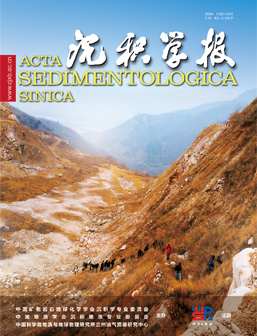Current Research Status on the Transportation of Fine-Grained Sediments
doi: 10.14027/j.issn.1000-0550.2024.117
- Received Date: 2024-07-17
- Available Online: 2025-03-04
-
Key words:
- Fine-grained sediments /
- Transport mechanisms /
- Triggering mechanisms /
- Sedimentary characteristics
Abstract: The study of fine-grained sediment transport mechanisms is an important part of the "source-to-sink" system theory of fine-grained sediments, which is significant for restoring sedimentary environments, understanding the distribution of fine-grained sediments, and predicting unconventional oil and gas resources. Due to the fine granularity of fine-grained sediments, which makes them difficult to observe, and the rich variety of transport mechanisms, each corresponding to different sedimentary structures, there is currently a lack of summary on the characteristics of fine-grained sediment transport mechanisms. This paper synthesizes current research findings and systematically organizes the transport mechanisms and characteristics of fine-grained sediments, dividing them into three major categories: physical transport, chemical transport, and biological transport. Physical transport includes river flow, wind, bottom flow, plume flow and six types of gravity flow transport, triggered by wind, tides, earthquakes, floods, storms, and volcanic eruptions; dissolved substances such as clay minerals, dissolved organic carbon, carbonate minerals, and iron minerals, which are transported in colloidal solutions or true solutions, are influenced by environmental factors such as pH value, Eh value, temperature, pressure, ion concentration, or charge, and can be transported chemically; vertical upward transport, transport near the sediment-water interface, and comprehensive transport by multiple types of organisms are the three forms of biological transport of fine-grained sediments. The purpose of this paper is to clarify the transportation methods of fine-grained sediments, enhance the understanding of the transportation mechanisms of fine-grained sediments, and thus promote the development of fine-grained sedimentology theory. It provides a solid theoretical foundation and scientific basis for clarifying the distribution characteristics of fine-grained sedimentary strata and predicting the distribution of unconventional oil and gas resources.
| Citation: | Current Research Status on the Transportation of Fine-Grained Sediments[J]. Acta Sedimentologica Sinica. doi: 10.14027/j.issn.1000-0550.2024.117 |






 DownLoad:
DownLoad: